Dune: Part Two Movie Review

Denis Villeneuve's Dune: Part Two movie adaption of the second half of Frank Herbert's Dune is very good. Verging on greatness. Villeneuve successfully captured key thematic elements of Dune in a way that is likely to resonate with audiences now.
I say this for two simple reasons:
- It is very good.
- Movies aren't books.
Let's explore the why in more detail.
I'll start with the second point, because until this is addressed I don't think I can give the movie it's due. When it comes to any beloved story being adapted for film, a lot of arguments revolve around what gets changed in the adaptation. I think that starting here is a mistake, because it isn't possible to translate a book into a movie without making changes.
This is because a book is an integrated sequence of verbal elements [Frye's literal sense or phase] that give it meaning. A movie, on the other hand, is a blend of images, dialogue, sound effects, and music.
Now as a poem is literally a poem, it belongs, in its literal context, to the class of things called poems, which in their turn form part of the larger class known as works of art. The poem from this point of view presents a flow of sounds approximating music on one side, and an integrated pattern of imagery approximating the pictorial on the other. Literally, then, a poem's narrative is its rhythm or movement of words. If a dramatist writes a speech in prose, and then rewrites it in blank verse, he has made a strategic rhythmical change, and therefore a change in the literal narrative. Even if he alters "came a day" to "a day came" he has still made a tiny alteration of sequence, and so, literally, of his rhythm and narrative. Similarly, a poem's meaning is literally its pattern or integrity as a verbal structure. Its words cannot be separated and attached to sign-values: all possible sign-values of a word are absorbed into a complexity of verbal relationships.
--Northrop Frye, Second Essay, The Anatomy of Criticism
In one sense, this seems like a really dumb thing to say. But I'm going to insist, as Frye does, that even if you alter the word order in a poem, you have changed its narrative. We cannot literally reproduce a book in movie format, changes must be made to turn words into images and those choices have consequences.
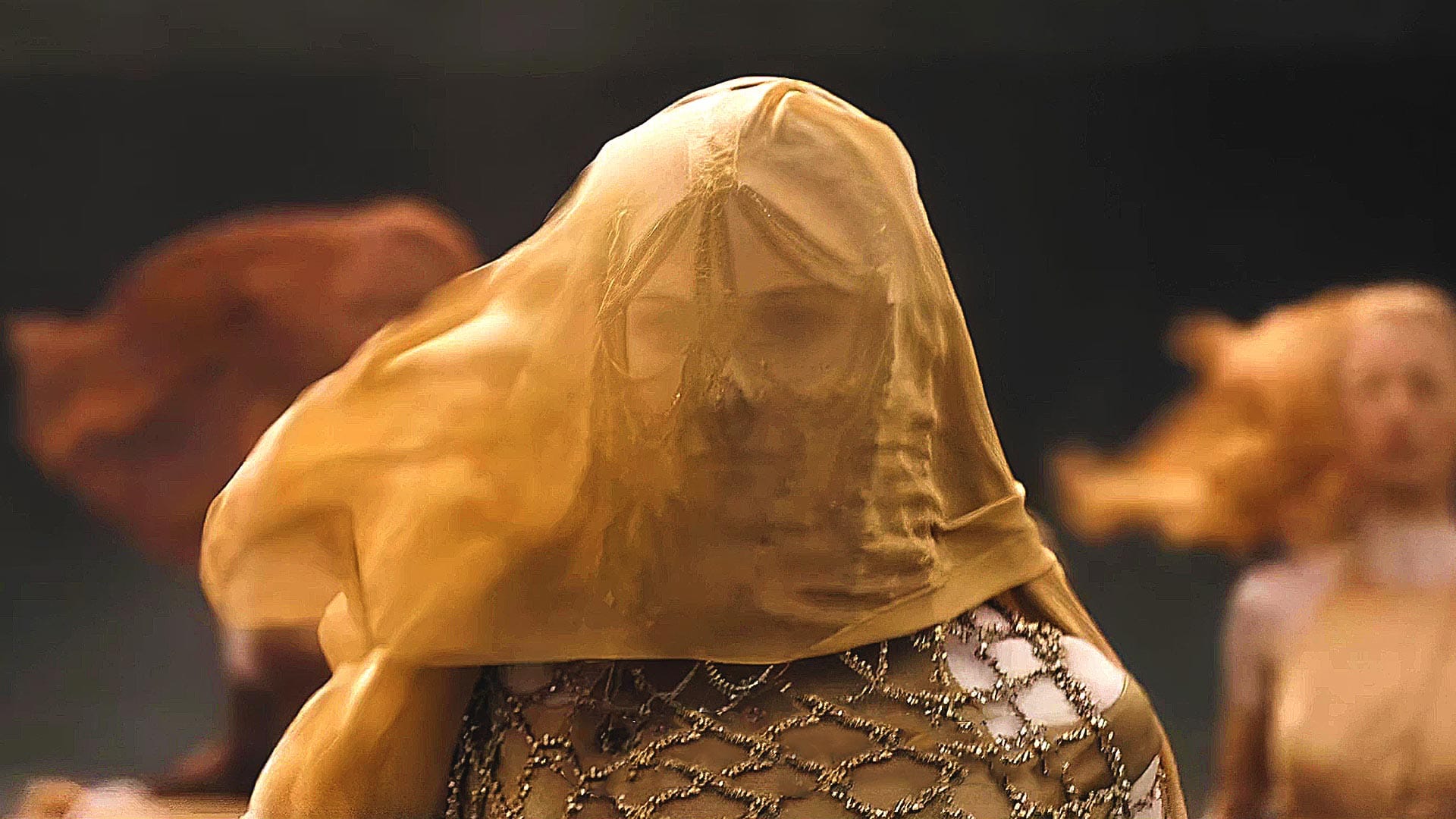
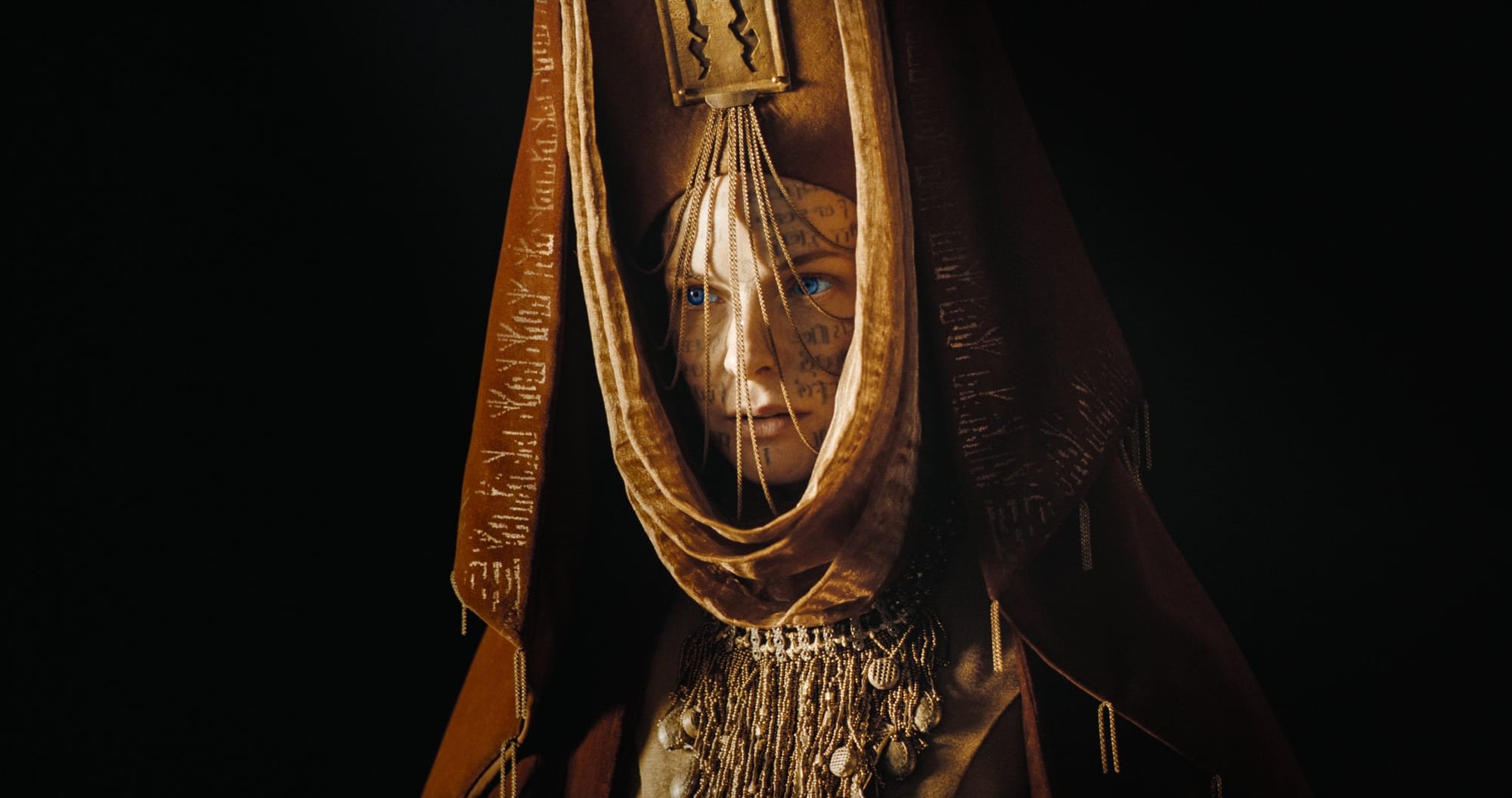
Choices have consequences
Any movie is thus a retelling of a book in an inherently different format, and in order to ask whether a given change enhances or detracts from a certain theme or character, we need to appreciate the relative strengths of the two media.
This the age of the movie, so I don't think I need to belabor the way in which the different elements blend together to create a powerful aesthetic experience with the visual element preeminent. What I think has become harder to appreciate is they way in in which written stories have a much greater conceptual density than any visual art.
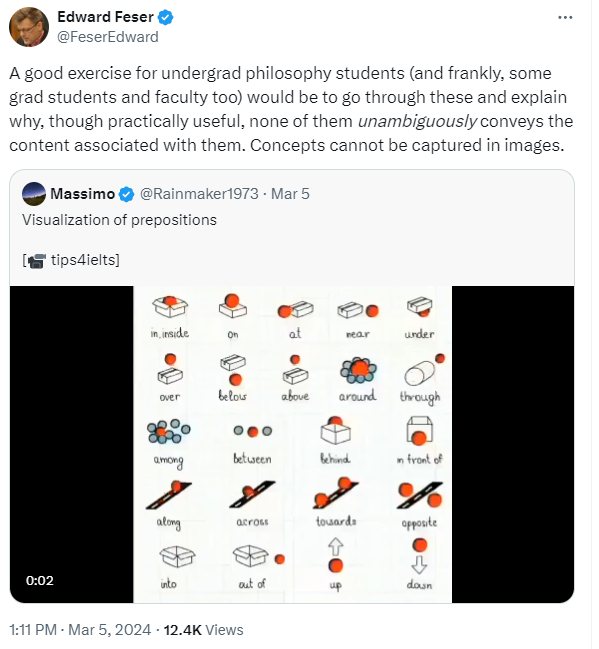
Words cannot fully capture concepts either, but words can operate at a higher level of abstraction than images, and encode greater depth of meaning because of that. Feser's tweet reminded me of another passage from Frye's Second Essay:
Just as a vivid sketch of a cat by a good draughtsman may contain in a few crisp lines the entire feline experience of everyone who looks at it, so the powerfully constructed pattern of words that we know as Hamlet may contain an amount of meaning which the vast and constantly growing library of criticism on the play cannot begin to exhaust. Commentary, which translates the implicit into the explicit, can only isolate the aspect of meaning, large or small, which is appropriate or interesting for certain readers to grasp at a certain time. Such translation is an activity with which the poet has very little to do. The relation in bulk between commentary and a sacred book, such as the Bible or the Vedic hymns, is even more striking, and indicates that when a poetic structure attains a certain degree of concentration or social recognition, the amount of commentary it will carry is infinite.
--Northrop Frye, Second Essay, The Anatomy of Criticism
Dune is not the Bible, but the amount of commentary it can carry is considerable. I take Villeneuve's movies as something like commentary in Frye's sense: isolating an aspect of meaning which is interesting or appropriate for a certain audience at a certain time.
Thus the task for any movie adaption of a book is to translate concepts into images, accepting that a certain loss of depth and fidelity will occur. Once we accept that this must happen, then we can assess whether the tradeoffs that were selected worked well to communicate those aspects the commentator has selected out of the original, textual work. It is criticism to assess whether this has been done well. It is not criticism in the sense I mean it to complain that something has been lost or left out.
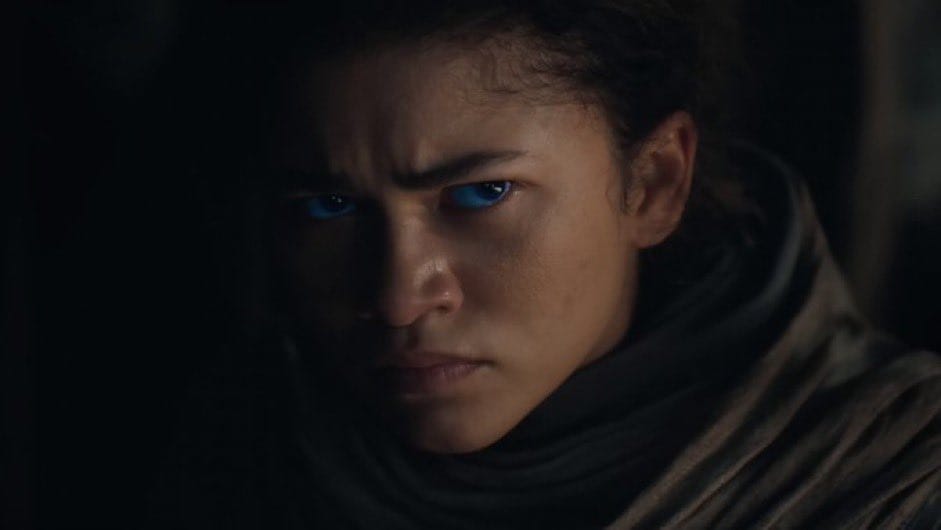
With that established, now we can turn to the movie itself. Like Part One, this movie is gorgeous. This is where the motion picture shows its true power, in visual spectacle. And what spectacle!
The barbaric coliseum on Giedi Prime where na-Baron Feyd Rautha spars with the remnants of the Atreides:
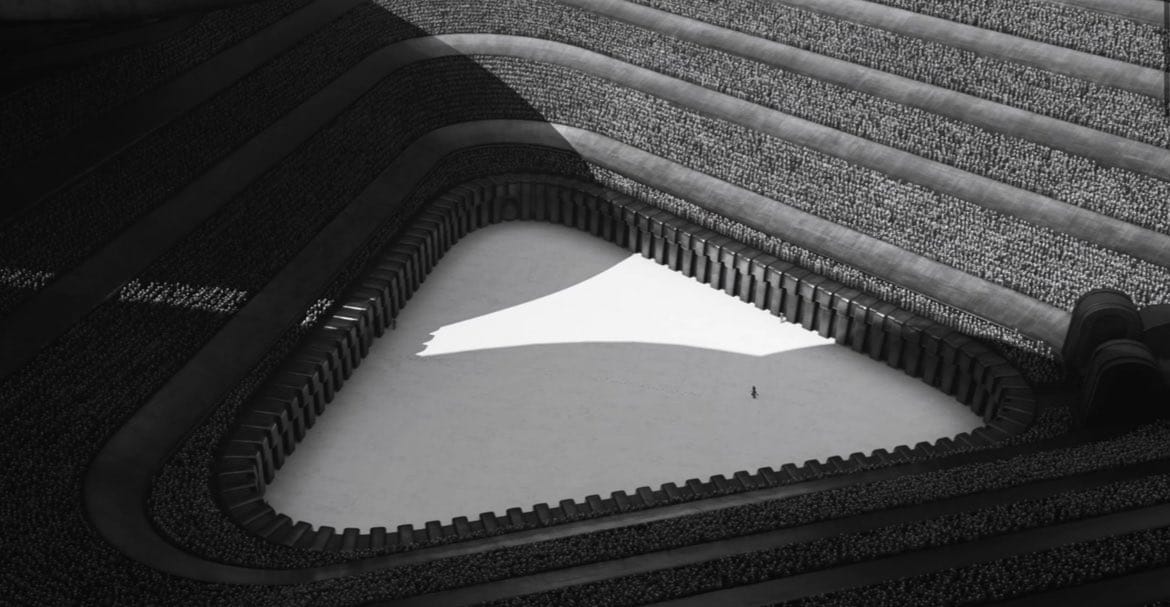
Or the breaching of the Shield Wall with the family atomics:
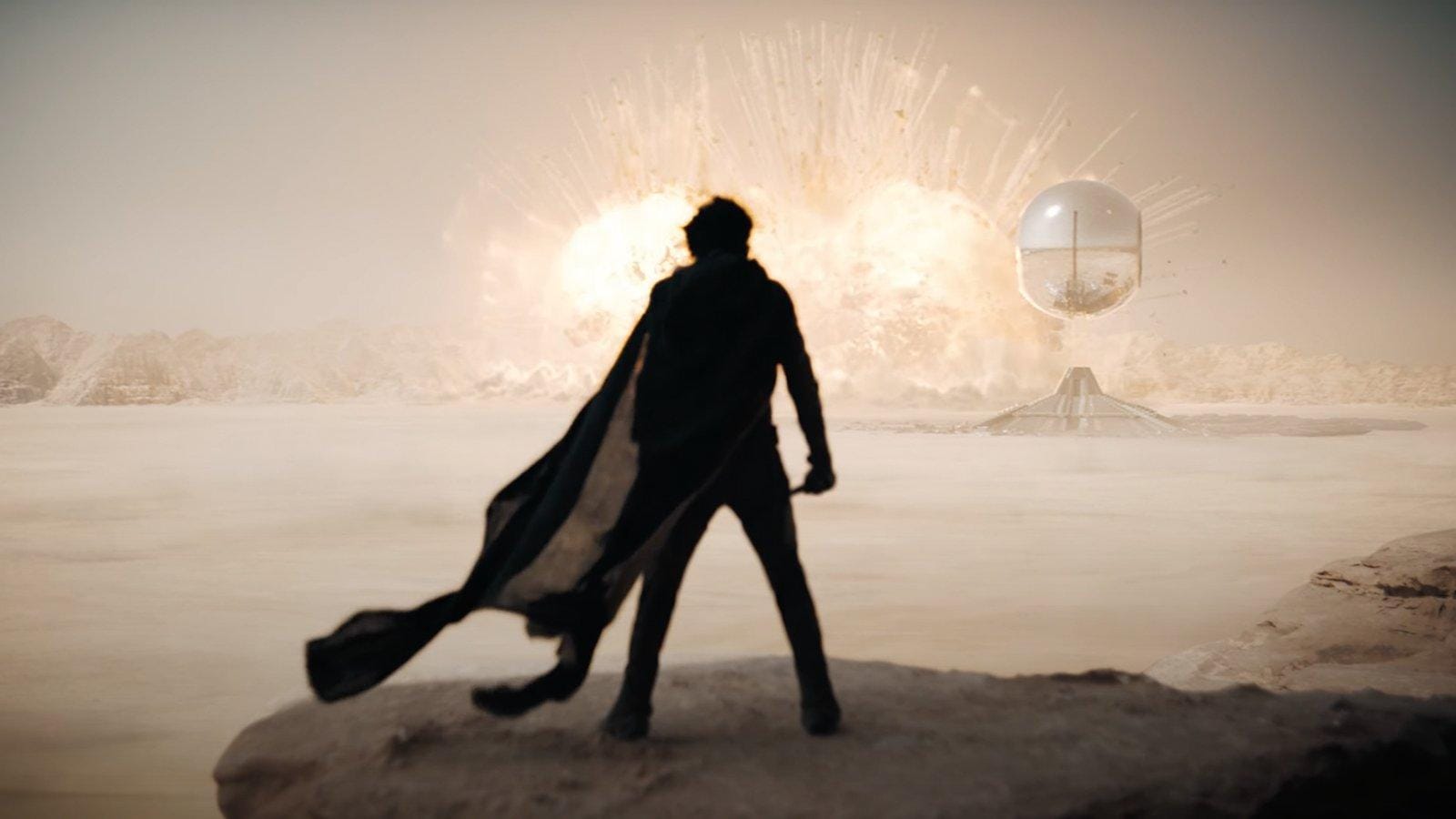
Or the oddly insectile spice harvesters:
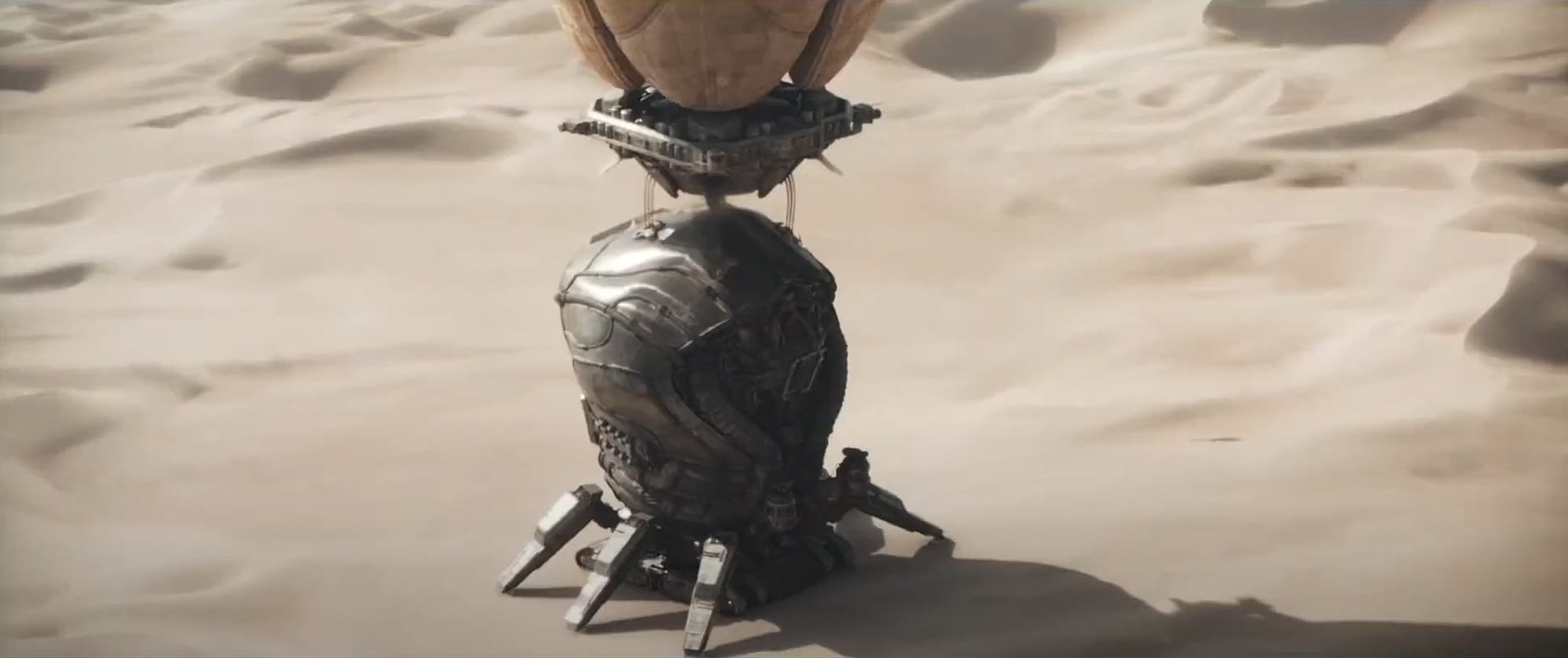
All of these are grand instantiations of Herbert's Dune.
There are subtler things too, many of which are specific to the film-maker's craft rather than the writer's. When my wife and I saw the movie, she pointed out to me that Austin Butler's Feyd Rautha had soft eyes, which is not the typical way that a sociopath is portrayed in film. Timothée Chalamet on the other hand, had absolutely terrifying eyes when he stopped being Paul Atreides and became Paul Muad'dib.
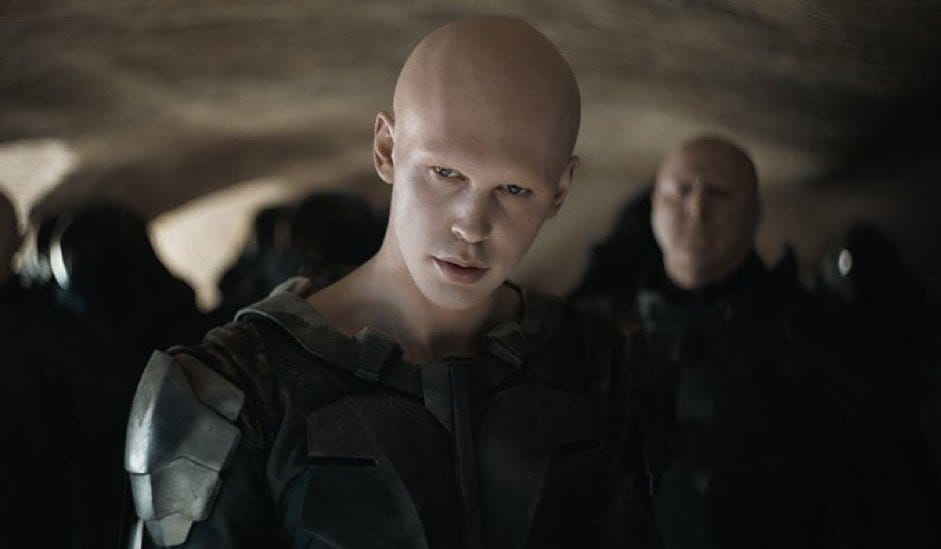
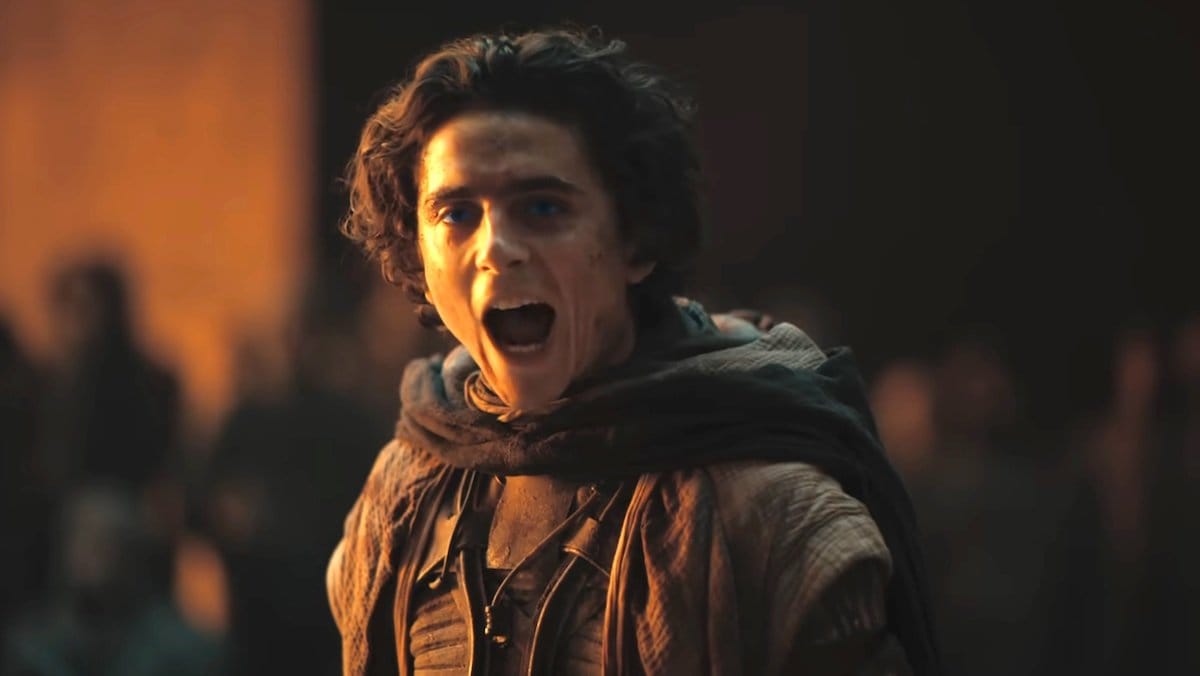
But spectacle and casting alone are not enough. Those are things specific to movie-making. If we are to evaluate how good of an adaption this is, we also need to see how Villeneuve communicates Frank Herbert's characters and themes to contemporary audiences. This is complicated by the bifurcated reception of Dune and its sequels.
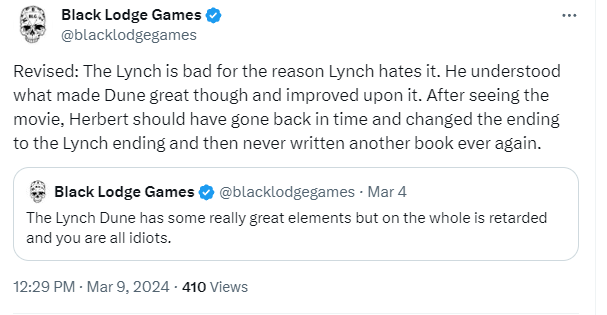
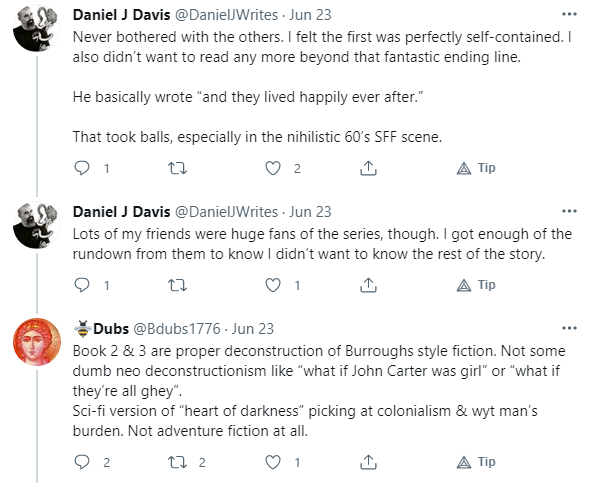
There is a type of fan that loves Dune, and has no interest in its sequels. Herbert wrote an exceptional adventure, with an arc consisting of the unjust death of a father, followed by the son working out his revenge from the shadows. It ends with the bad guy getting dead, and the hero marries the princess.
However, Herbert wanted to tell a different story than just this. If Dune were a comedy, which is the form fans of book one only really want it to be, then the hero would be Leto and not Paul. In the form of comedy, Leto and Jessica's love would transform and renew not only Arrakis, but their whole corrupt civilization. But this is not what we get.
Dune and Dune Messiah considered together are one of the finest tragedies of the twentieth century. Herbert worked very hard in Dune to set Paul Atreides up as a larger than life hero in order to tear him down in the sequel. Paul meets a fate that even the Kwisatz Haderach cannot escape. However, the full scope of the tragedy doesn't hit until book two.
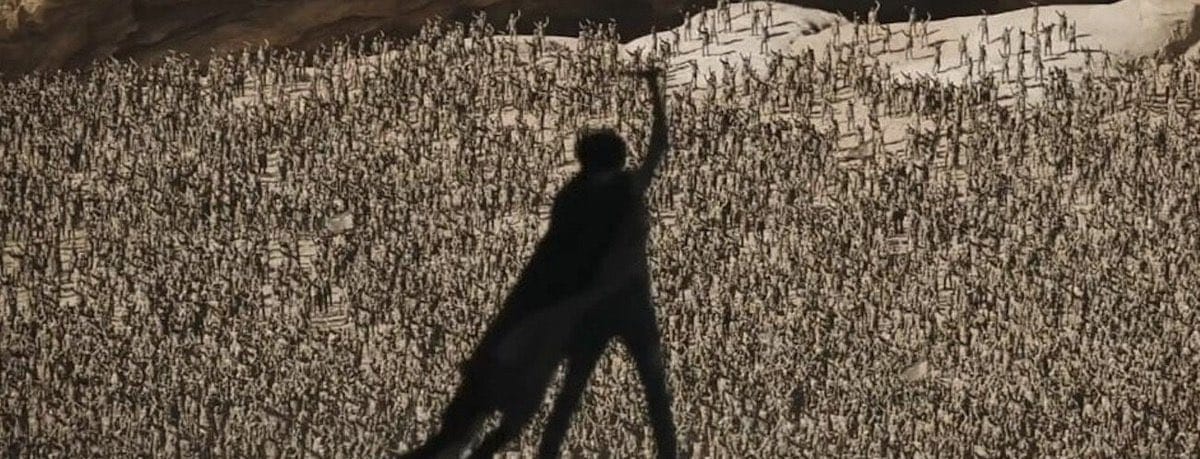
Frank Herbert used extensive foreshadowing in Dune, such that every triumph of Paul's is shot through with sadness and even horror, but at the same time Paul's greatness, his charisma and way in which he truly loves those who follow him obscures that fated downfall.
Movies are not good at the kind of verbal subtlety that Herbert used to do this. Lots of fans of the first book don't even see it, or don't want to. When Villeneuve and his writers approached the story, they chose to ramp up the foreshadowing ahead of Paul's victory on Arrakis so that no one could possibly miss it.
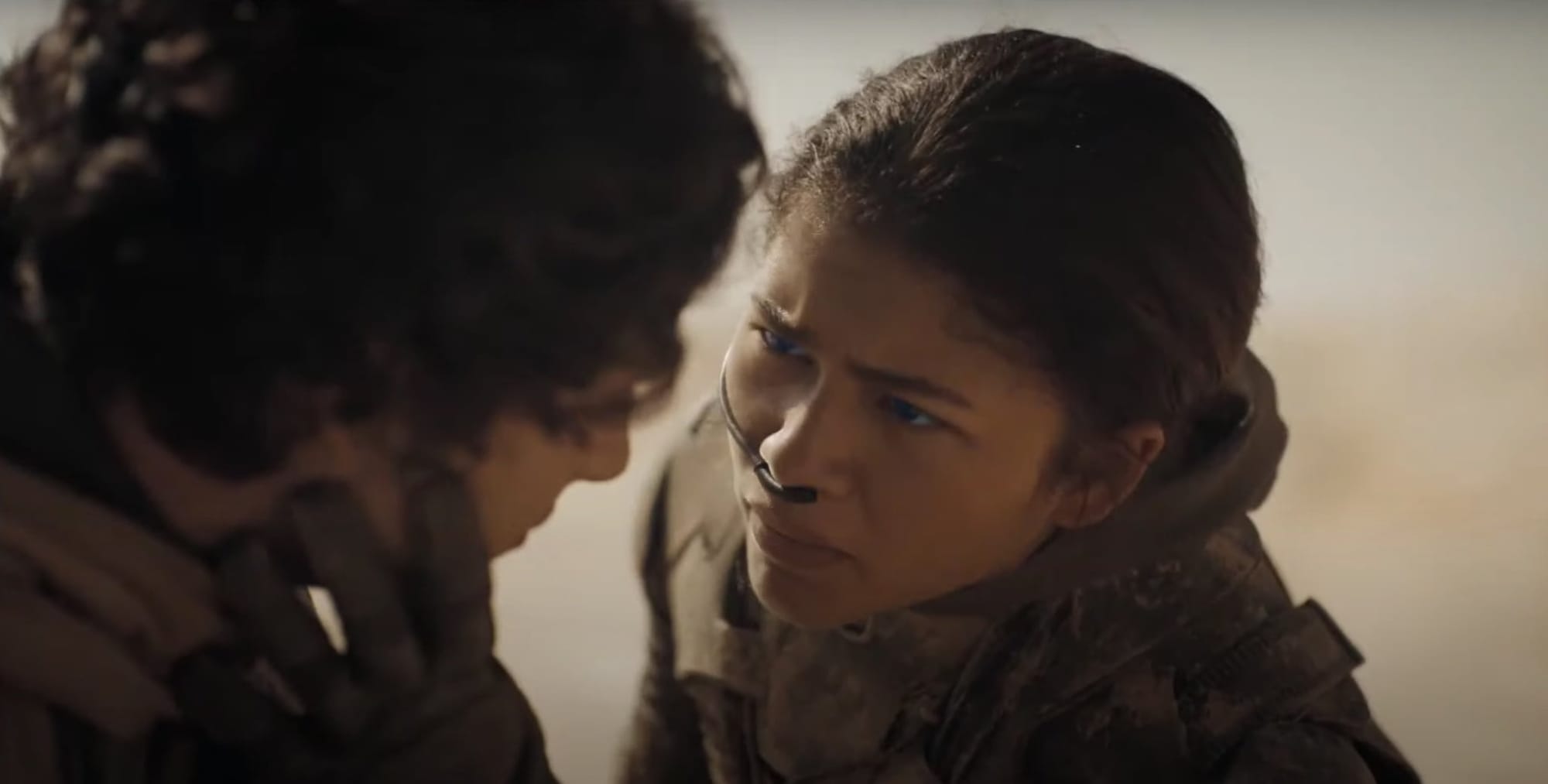
The primary way that they chose to do this was by changing the character of Chani. This change is hard for a lot of fans of the book to swallow, but I think it makes sense if you want to emphasize Herbert's theme of the danger of charismatic leaders. Chani's role in the story is compromised in order to broadcast the theme to the audience.
Northrop Frye called this the distinction between internal fiction and external fiction:
The literary works we have so far been considering are works of fiction in which the plot is, as Aristotle called it, the "soul" or shaping principle, and the characters exist primarily as functions of the plot. But besides the internal fiction of the hero and his society, there is an external fiction which is a relation between the writer and the writer's society.
--Northrop Frye, First Essay, The Anatomy of Criticism
Chani in Dune: Part Two exists to fill a role like the chorus in a Greek play, highlighting things the playwright wished to emphasize, and providing commentary on things that are happening directly to the audience. Chani in Herbert's book was not an angry dissenter from Paul's prophesized role as the Lisan al-Gaib, but as Liet Kynes' daughter, Chani was key in seeing her father's vision come to fruition in Paul.
I'm not mad about this change, because I think I can see the objective. If even fans of the book can miss the foreshadowing of Paul's doom, to write a screenplay intended for a mass audience that imitated Frank's book more faithfully could result in undermining Frank's theme. This is an honest attempt to translate Frank Herbert's story into a different format.
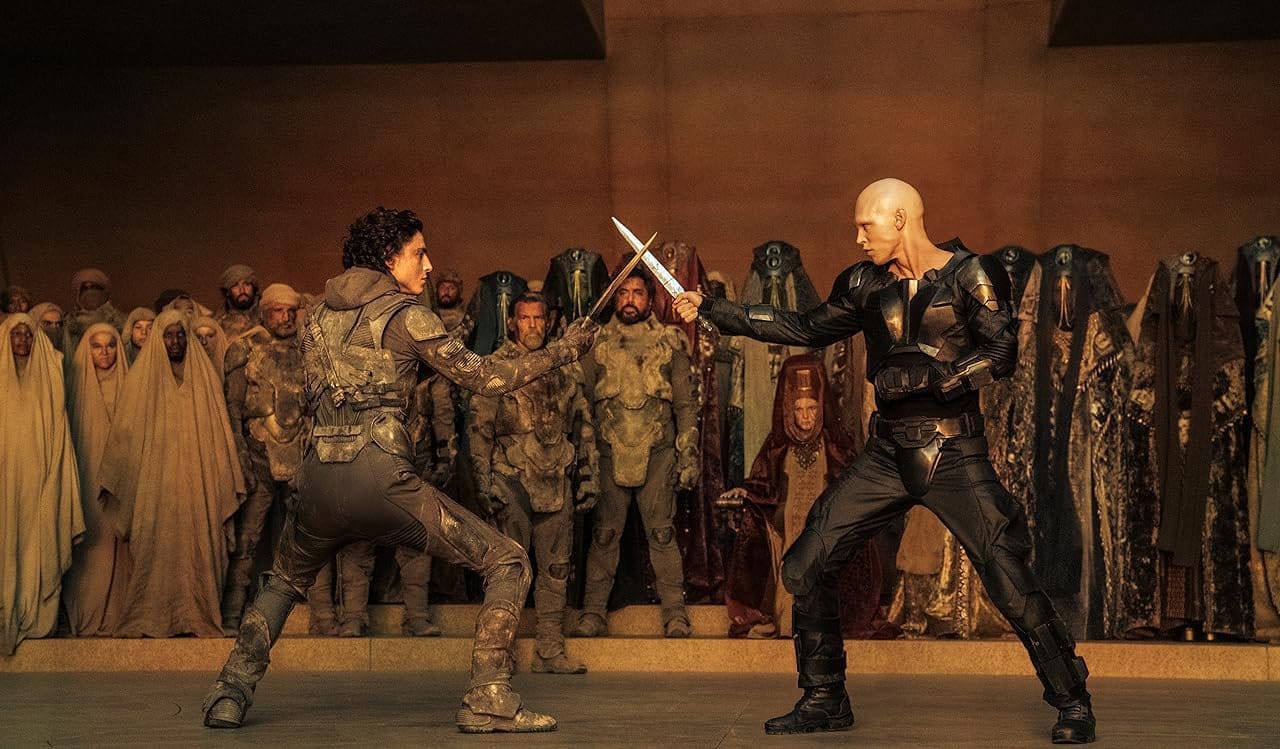
At the same time, I would be sympathetic to an attempt to do justice to the internal fiction of the story instead. What I see here is that the difference in media forced a choice between the internal consistency and relationship of the characters to each other and the events of the narrative, and how the audience would receive those things.
Which isn't to say that I think Villeneuve nailed it every time. In the scene where Paul and Feyd Rautha duel, Lady Jessica sits while everyone else stands. I think modern audiences are likely to interpret her chair as an accommodation to her pregnancy rather than her status as a Reverend Mother, something like being a Catholic or Orthodox Bishop. It is great symbolism, but I'm not sure it means much to audiences now.
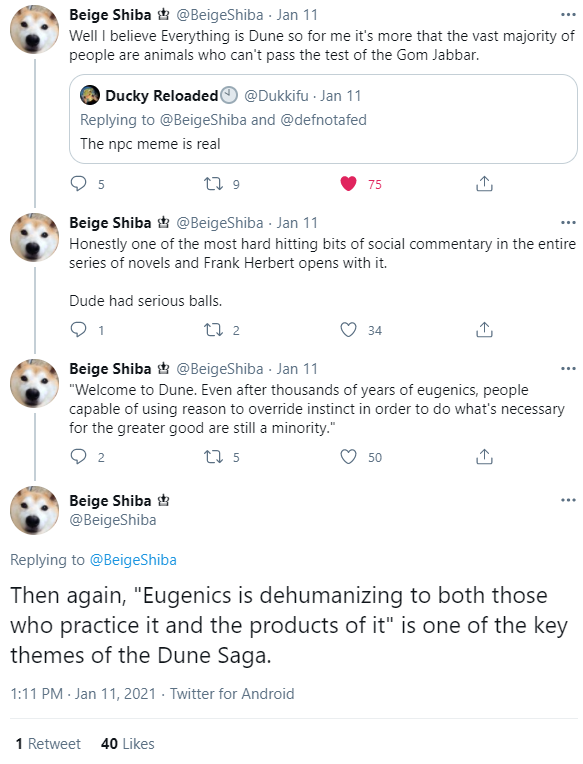
Given how relatively important Frank's themes are to Dune and its critical reception, I am okay with Villeneuve's changes. Especially because while I think you can justifiably see Chani's new characterization as a typical manifestation of current-year mainstream cultural attitudes, Villeneuve's Dune: Part Two retains much of Frank Herbert's most hard-hitting bits of social commentary, including things which are most unwelcome in the current year.
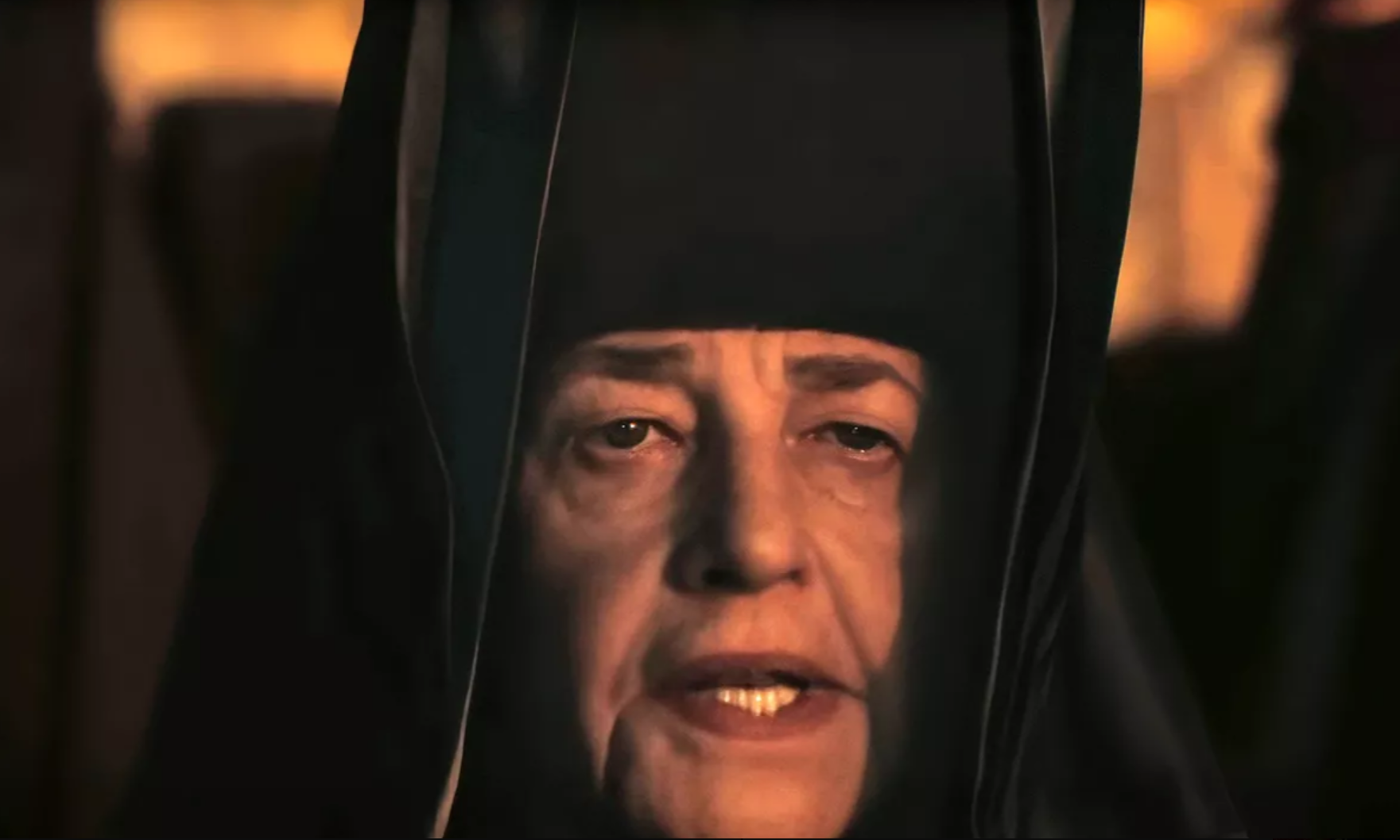
In particular, Dune and its sequels imagined what the world would be like if women exerted significant political power, through the Bene Gesserits and their generations-long program of manipulating the Emperor and the Great Houses to breed the Kwisatz Haderach.
Unlike some of the more brain-dead versions of feminism, Frank had enough imagination to envisage that in that circumstance, women would fuck it up as massively as men ever did, but in characteristically feminine ways.
In part, the almost greatness of Dune: Part Two comes from the greatness it inherits from the themes and speculation in Frank Herbert's masterpiece of a tragedy. But it is also excellent cinema in its own right, and can be appreciated without exquisite familiarity with its source material.
Eugenics and the dehumanization it causes. The great danger of charismatic leaders. The fallenness of man [and woman]. All of these are here, and thus I rate Villeneuve's adaption very good. There are of course themes missing as well. Very little of the Western occult themes of Dune made it into the movie, but I don't think those translate well to this format.
So as long as we can accept that movies are not books, that cinema with all of its visual power lacks something books have, then this is a very good adaption.
Stills from Dune: Part One © 2021 Legendary and Warner Bros. Entertainment Inc. Fair Use.
Stills from Dune: Part Two © 2024 Legendary and Warner Bros. Entertainment Inc. Fair Use.


Comments ()